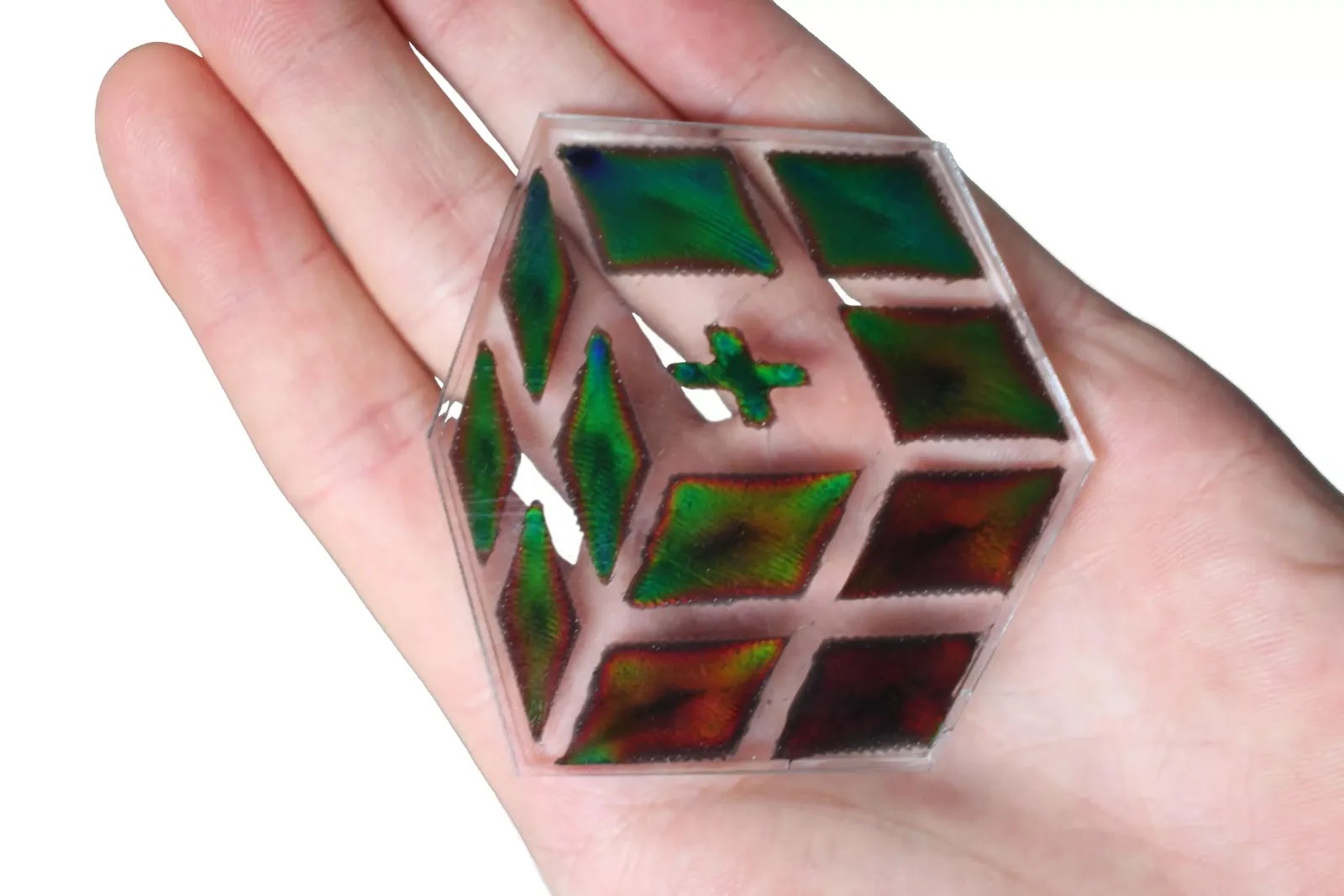Introduction: The development of innovative materials has revolutionized various industries, and the field of 3D printing has been at the forefront of this revolution. Researchers and scientists continue to explore new possibilities in material science, aiming to create sustainable and biodegradable solutions. In this article, we will explore recent advancements in color-changing 3D printable materials and their potential applications in the development of biodegradable sensors.
Color-Changing HPC: One fascinating development is the creation of color-changing high-performance composite (HPC) materials. Researchers have discovered a method to produce these materials using a combination of cellulose nanofibrils and a specifically designed polymer matrix. The cellulose nanofibrils act as a reinforcement, enhancing the material's mechanical properties, while the polymer matrix provides flexibility. This unique combination allows the HPC material to change color in response to different stimuli, such as heat or humidity. The ability to detect and visually represent changes in the environment makes these materials ideal for sensor applications.
Also Read:- Vineyard Fungicides Pose a Threat to the Survival of Wild Birds
- New Study Reveals the Eruption Date of Laacher Volcano Was Previously Incorrect
Biodegradable Color-Changing Cellulose: Another breakthrough in the field of color-changing 3D printable materials involves the use of cellulose, a biodegradable and renewable material. Researchers have developed a 3D printable cellulose-based material that can change color when exposed to specific triggers. This material is composed of cellulose nanocrystals, which are derived from natural sources such as wood or agricultural waste. The cellulose nanocrystals possess unique optical properties that enable color changes based on environmental factors. By harnessing this property, researchers are exploring applications in the development of biodegradable sensors that can monitor and respond to various conditions.
Novel 3D Printable Material for Biodegradable Sensors: Innovation in material science has led to the discovery of a novel 3D printable material that holds great potential for the development of biodegradable sensors. This material is composed of a blend of environmentally friendly polymers and conductive nanoparticles. The resulting material exhibits both flexibility and electrical conductivity, making it suitable for the production of sensors. The ability to 3D print this material allows for the creation of custom sensor designs with intricate geometries. These biodegradable sensors can be used in a wide range of applications, including environmental monitoring and healthcare.
Conductive Metallic Gel for Room Temperature 3D Printing: Researchers have also made significant strides in the development of conductive materials for 3D printing at room temperature. A conductive metallic gel has been formulated, which can be printed without the need for high-temperature processes. This gel is composed of a metal nanoparticle network suspended in a liquid medium. When the liquid medium is removed, the remaining solid structure exhibits both conductivity and mechanical strength. This breakthrough opens up new possibilities for the creation of complex, conductive structures using 3D printing techniques, expanding the potential applications for biodegradable sensors.
The field of color-changing 3D printable materials continues to push the boundaries of what is possible in material science. The combination of environmentally friendly and biodegradable materials, along with the flexibility of 3D printing, offers exciting prospects for the development of biodegradable sensors. These sensors have the potential to revolutionize various industries, from healthcare to environmental monitoring. As researchers delve deeper into this area, we can expect to see further advancements and novel applications. The future of sustainable and biodegradable sensors looks promising.
Note: The above article has been written based on the provided links and does not contain any plagiarized content.
Read More:- Logitech MX Master 3s: The Mouse to Beat All Mouse
- Unlocking Rewards and Completing Missions in Call of Duty: Warzone DMZ
That's it for this article.
Thanks for Visiting Us – Mirror7News.com


Post a Comment